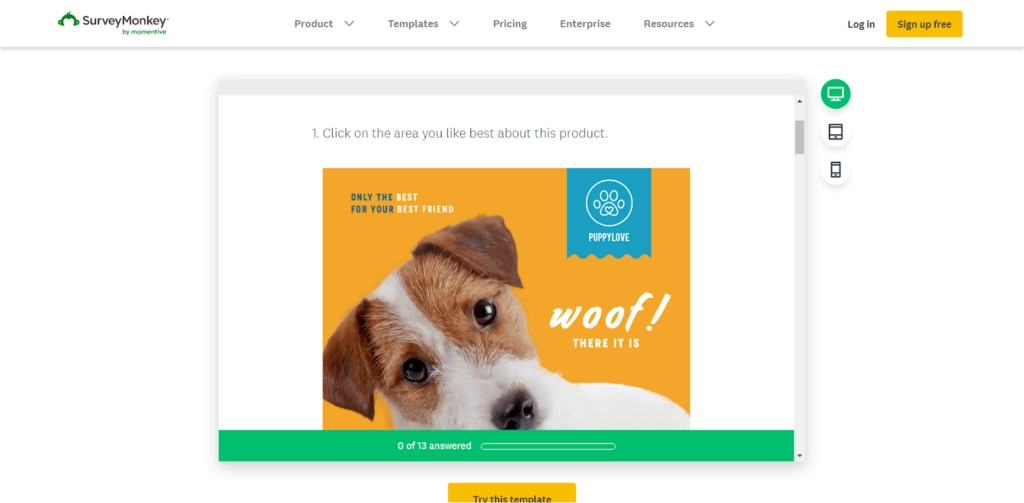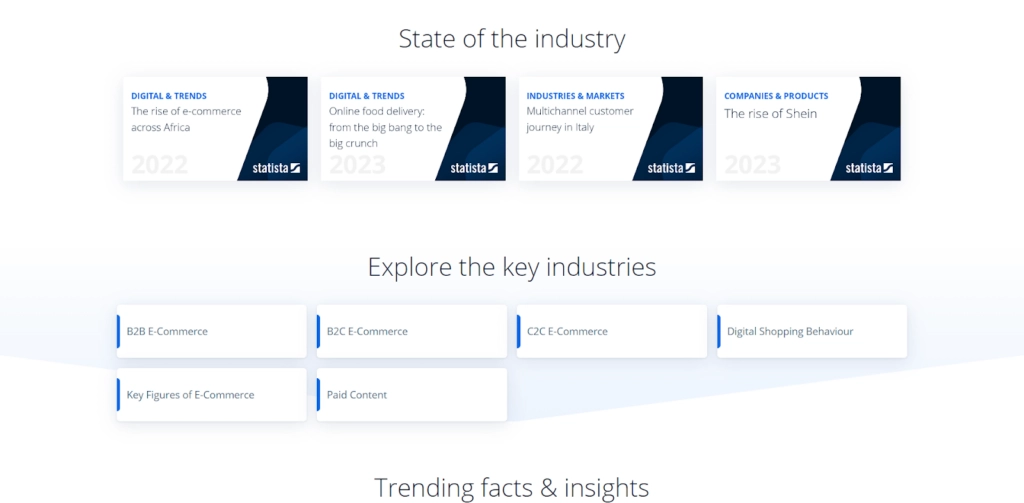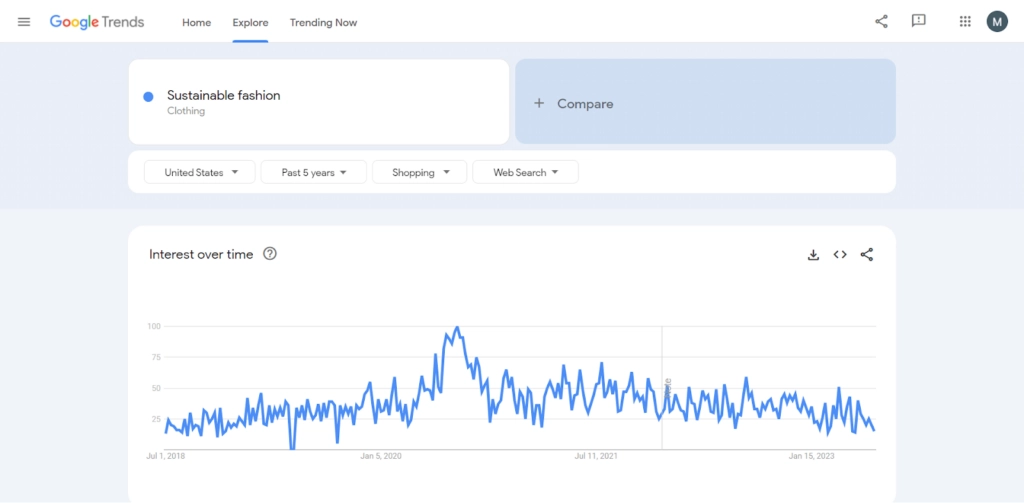Starting a business or expanding into new markets is a challenging, yet thrilling, task.
You may wonder, “Will consumers need and accept my products? How will my offers fill the niche in line with the latest trends?”
Apart from selling what’s in demand, you need to stand out from the crowd and compose a unique value proposition. Feel like that’s too much on your plate?
Let’s break down the task into smaller steps (eat an elephant a bite at a time, remember?).
First, you need data on customers, competitors, and the market situation. That’s where market research becomes indispensable for eCommerce store owners.
In this article, we’ll guide you through the process of conducting market research for an eCommerce business. We’ll explain how you can benefit from it and provide specific steps to reaching your goals and minimizing risks.
Whether you’re a startup or an established eCommerce company looking to expand your product range, you’ll find this guide insightful.
Why Should You Conduct eCommerce Market Research?
Market research for eCommerce businesses or the eCommerce industry as a whole includes gathering data about your target audience and target markets:
- Who are your target customers?
- What do they think?
- What are their motivations, values, and preferences?
- Are there any frictions on their purchase journey?
- Is your website fast enough, or should you boost your Shopify, WooCommerce, or Magento performance?
- Should you develop new products or introduce some strategies like cross-selling and upselling?
Answer these questions, and you’ll create enticing products and tailored shopping experiences that appeal to your buyers. But that’s not all in this list of benefits.
When you know how and what your competitors are doing, you can find opportunities to win over them and drive their audience to your online store. Plus, when relying on data rather than assumptions, you can avoid costly mistakes.
Market Research for an eCommerce Business: A Step-by-Step Guide
Follow these steps to perform market research for your eCommerce brand.
Start with Identifying Your Target Audience
Companies with documented personas are 71% more likely to exceed their goals for leads and revenue.
Just like setting a GPS before a road trip, defining your target audience can help you reach the desired destination. Now let’s elaborate on this topic.
First, what data should you collect? Of course, you need demographics and other fundamental data. But that’s not all.
While age, region, income, and occupation can help you better understand your consumers, psychographics go further. They expose motivations behind purchases, consumer interests, attitudes, and behaviors. All of this makes people real beings with emotions, fears, and aspirations.
To develop an accurate customer profile, use dedicated tools:
- Typeform and SurveyMonkey to build interactive and appealing surveys, feedback forms, and quizzes;
- Determ and Hootsuite to track social media mentions, sentiments, and hashtags;
- Make My Persona by HubSpot, which provides a template for creating customer profiles and customizing them to your needs. You can see a screenshot of this handy tool below.

Research Your Competitors
The next step in your eCommerce market research should involve analyzing your competitors. They’re an integral part of the market ecosystem and can provide information on what works, whether the products have their consumers, and what you’d better avoid.
But how do you begin? Enumerate existing competitors in a separate spreadsheet by searching for a relevant keyword on Google.

For example, a Bluetooth speaker. As you can see, there are a lot of big players in this sector.
However, you should examine both direct and indirect competitors. That is, the ones who sell similar products and those who offer different items but fill the same demand.
Other ways to spot these rivals are through industry reports, professional forums, and social media research. Consider sites like Quora and Reddit or niche communities like TechCrunch or Shopify Plus Community.
Check the following information:
- product offerings;
- pricing strategies;
- marketing tactics;
- how long they have been on the market;
- shipping, return, and payment policies;
- website design, mobile and desktop versions, purchase journey, and possible frictions.
Note: it has nothing to do with imitating competitors. Competitor analysis involves identifying market gaps and one-of-a-kind opportunities, such as:
- a service they don’t provide;
- a market they don’t target;
- a consumer need they don’t meet.
The following tools can streamline this process:
- SEMrush/Ahrefs to see organic and paid traffic trends, website’s DR, backlinks, keyword search volume, and other information;
- SimilarWeb to overview traffic, engagement metrics, traffic sources, referrals, etc.;
- SpyFu to obtain more detailed competitive landscape information, including domain overview, keyword research, and backlinks analysis, at a lower price than SEMrush and Ahrefs.
Choose Your Research Methods
After identifying your ideal buyers and investigating competitors, you need to finalize the research methodology. You can choose primary or secondary research or a combination of the two. We’ll describe them in more detail further in the next sections.
One of the easiest things during market research for an eCommerce business is to get overwhelmed with numerous tools. Yet, to get comprehensive data, you should combine various forms of research.
Let’s take keyword research as an example. To understand the demand for the product, you can analyze the search volume for your keyword. The more people look for this term, the more chances of appealing to them. Yet, it doesn’t guarantee profitability.
Keyword research is also helpful for planning inbound marketing strategies. More relevant keywords will make you appear higher in search results and drive more potential customers to the online store.
Dive Into the Ways to Collect Primary Data
Primary data is information collected by you from first-hand sources. This data provides value as it’s raw, current, and tailored to your business. You can gather it from resources, such as:
- Surveys. As mentioned above, you can build customized surveys using special tools and place them on the website or send them via email. You can also partner with bloggers and influencers to research their target audience. Or you ask them to run a survey for you. It will allow you to uncover customers’ pain points, the most popular stores, or the products they’d like to exist.
SurveyMonkey provides dozens of templates to compile a survey fast. One of them is in the screenshot below.

- Interviews. It’s a more direct way to communicate with the audience. You can hold one-on-one Zoom calls to ask follow-up questions arising from the given answers.
- Focus groups. They function much like a brainstorming session with your clients, typically 7-10 representatives of your target audience.
- Customer feedback. These are real opinions from your client base. To get these details, use tools like Trustpilot or the feedback section of your website.
Employ Secondary Data Analysis
Secondary data is information collected by others and repurposed for other companies. In our case, for you. Some of the examples include studies, publications, statistics, or your competitors’ websites. So, where do you find these insights?
- Data from the government. Ecommerce businesses can take reports from the U.S. Census Bureau to get data on consumer behavior and retail sales.
- Commercial sources. These are specialized companies conducting research to sell it to others. Statista, Insider Intelligence, Marketing Charts, and Nielsen are some examples. In the screenshot below, you can see the particular sections and industries you can explore on Statista.

- Industry studies. As an illustration, HubSpot and Salesforce release yearly “State of Marketing Reports,” in which they share their online marketing research and summarize the most recent market developments.
Identify Current Market Trends and Opportunities
So you know your customers and competitors and have the necessary information on them. As you need to understand the context, the next step is analyzing trends from different angles.
Let’s look at how to do market research for eCommerce:
- Consider consumer behavior, technological developments, and even major events in the world. Let’s say more and more people decide to work from home. How online buying preferences have changed as a result of this transition?
- Utilize Google Trends to stay in touch with the world audience. By entering a keyword, you can instantly observe how its level of popularity has evolved over time. Even better, you may access keyword comparisons and regional trends.
Suppose you want to expand your online store to provide sustainable clothing. Let’s try the “sustainable fashion” term on Google Trends. The tool will display the most popular regions for this phrase and indicate whether or not interest is growing.
I chose the past five years as a timeframe.

Use Your eCommerce Website to Run Analytics
When the research is complete, it’s time to test the waters. What I mean is that you need to develop a website (if you launch a new online store) and monitor traffic behavior.
Choose a suitable website builder. Platforms differ according to the level of flexibility, price, the difficulty of launching and managing the store, etc.
After delivering a website, you’ll need to drive traffic to the website. As a startup, paid advertising is the fastest way to do it. However, SEO, SMM, content marketing, and link building are also essential yet more time-consuming.
Have visitors started to browse your website? If yes, track their clicks, scrolls, and purchases. To interpret all of this information, use Google Analytics – used by 55.6% of all websites for conducting web analytics.
This tool transforms unprocessed data into clear reports, for example:
- which goods are the most popular;
- where users abandon carts;
- which marketing channels generate the most traffic.
If you’re curious about the effectiveness of your new homepage design, run an A/B test. Interested in the geographic location of your visitors? Investigate the Geo report.
Don’t Stop Improving
You can’t just conduct eCommerce market research once. Similar to working out in the gym and building muscle, developing business insights requires consistency and constant improvement.
Why is ongoing development necessary? Four words: nothing stays the same.
Competition levels up, as well as market trends and consumer preferences change.
And don’t forget about new technologies (hello, AI and machine learning!). What worked a year ago, or even a month ago, might not show results now.
How can you maintain the effectiveness of your market research efforts? Make regular check-ins your priority. Like you wouldn’t anticipate seeing effects from a single workout, frequent market research enables you to identify, monitor, and predict trends and shifts.
Keep refining and adjusting your strategies to ensure the highest quality of your research.
Conclusion
Most business owners make the same mistake. They believe they know their target market and neglect proper eСommerce market research. Don’t be like them,
Market research for eCommerce can be a very thought-provoking experience. It opens up new possibilities and helps you develop your company. Every action you take, from identifying your target market to monitoring website statistics, advances you closer to the end goal: knowing your market and your client’s demands.
So take control of your business and build a data-driven, customer-focused experience.
FAQs
What is the importance of eСommerce market research?
Market research for eCommerce provides insights into consumer behavior, market trends, and competition. It’s essential for discovering areas for improvement, conversion opportunities, and customer demands. Equipped with this information, online retailers can optimize their product offerings, decide on launching new goods, shape pricing, and adjust promotional methods. As a result, the eCommerce business will better fit the current market and prosper.
What are the strategies for identifying a target audience for eCommerce?
Begin with studying your prospects’ demographic data, like age, gender, geography, and income level. To get information on their likes, dislikes, preferred communication methods, and shopping behaviors, tap into the following sources:
- tools like Google Analytics;
- social media insights;
- customer reviews.
Also, introduce surveys on the website or send emails asking shoppers to leave their thoughts on their experience in your store. Interviews and focus groups are even more direct yet effective ways to understand your audience.
What eCommerce market research tools can I employ?
There are various tools available, including Google Trends, SEMrush, and Ahrefs. They help with trend research, benchmarking, and behavior analysis, casting light on competitor SEO strategies and your website’s metrics.
Use social media analytics tools like Hootsuite Analytics, RivalIQ, or Brandwatch to analyze your SMM strategies. To collect customer feedback, choose SurveyMonkey, Jotform, or Qualaroo. Other valuable resources include eCommerce-specific apps like Jungle Scout.
How often should I do eCommerce market research?
As the market constantly evolves, so should you regularly adapt. That’s why you should return to market research now and then, for example, every quarter. This approach lets you stay tuned to shifting consumer trends and market dynamics. This rule applies to common situations.
If you plan to introduce new products, hold significant industry events, or see fluctuations in consumer behavior, conduct eCommerce market research more frequently.
What mistakes should I be aware of during eCommerce market research?
ECommerce market research may imply some pitfalls, such as:
- ignoring local peculiarities: markets, consumer preferences, and laws;
- overlooking seasonal factors;
- neglecting industry-specific forums;
- focusing too much on general market trends rather than a specific niche;
- not collecting qualitative insights, such as customer opinions, reviews, or feedback.
Avoid them to build effective market research strategies for your online store.
___

Art Malkovich is a co-founding partner and CEO at Onilab. The company develops eCommerce websites and progressive web apps on a turnkey basis and offers store migration and UX/UI design services. Art has profound expertise in web development, project management, and data analysis. He strives to keep the team one step ahead with a current focus on headless commerce.

